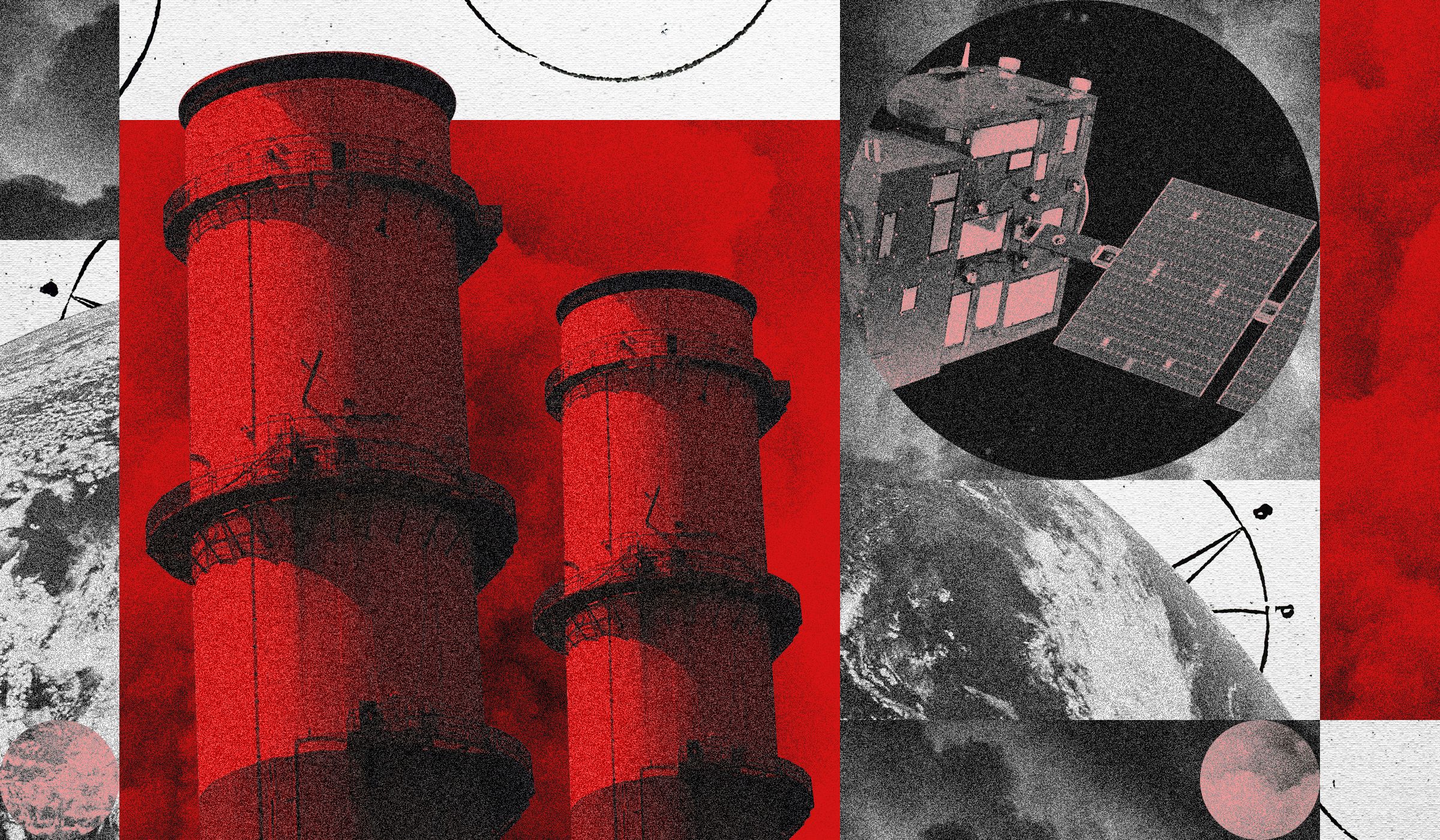The Environmental Protection Agency announced earlier this month that it would stop making polluting companies report their greenhouse gas emissions to it, eliminating a crucial tool the US uses to track emissions and form climate policy. Climate NGOs say their work could help plug some of the data gap, but they and other experts fear the EPA’s work can’t be fully matched.
“I don’t think this system can be fully replaced,” says Joseph Goffman, the former assistant administrator at the EPA’s Office of Air and Radiation. “I think it could be approximated—but it’s going to take time.”
The Clean Air Act requires states to collect data on local pollution levels, which states then turn over to the federal government. For the past 15 years, the EPA has also collected data on carbon dioxide, methane, and other greenhouse gases from sources around the country that emit over a certain threshold of emissions. This program is known as the Greenhouse Gas Reporting Program (GHGRP) and “is really the backbone of the air quality reporting system in the United States,” says Kevin Gurney, a professor of atmospheric science at Northern Arizona University.
Like a myriad of other data-collection processes that have been stalled or halted since the start of this year, the Trump administration has put this program in the crosshairs. In March, the EPA announced it would be reconsidering the GHGRP program entirely. In September, the agency trotted out a proposed rule to eliminate reporting obligations from sources ranging from power plants to oil and gas refineries to chemical facilities—all major sources of greenhouse gas emissions. (The agency claims that rolling back the GHGRP will save $2.4 billion in regulatory costs, and that the program is “nothing more than bureaucratic red tape that does nothing to improve air quality.”)
Joseph says shutting down this program hamstrings “the government’s basic practical capacity to formulate climate policy.” Understanding how new emissions-reduction technologies are working, or surveying which industries are decarbonizing and which are not, “is extremely hard to do if you don’t have this data.”
Data collected by the GHGRP, which is publicly available, underpins much of federal climate policy: understanding which sectors are contributing which kinds of emissions is the first step in forming strategies to draw those emissions down. This data is also the backbone of much of international US climate policy: collection of greenhouse gas emissions data is mandated by the UN Framework Convention on Climate Change, which undergirds the Paris Agreement. (While the US exited the Paris Agreement for the second time on the first day of Trump’s second term, it remains—tenuously—a part of the UNFCCC.) Data collected by the GHGRP is also crucial to state and local climate policies, helping policymakers outside the federal government take stock of local pollution, form emissions-reductions goals, and track progress on bringing down emissions.
There’s some hope that nongovernmental actors could help. In recent years, various groups have stepped up to the table to help calculate greenhouse gas emissions from sources both in the US and nationwide. These groups use a mix of federal, state, industry, and private data—from oil and gas industry databases to public and private satellites to federal data like what the EPA provides—to create tools that help policymakers and the public understand where greenhouse gas emissions are coming from, and how they impact people in various ways. Technology has also grown leaps and bounds, too, as artificial intelligence models are getting more advanced at both tracking and modeling emissions from different sources.
In the days since the EPA’s announcement, groups collecting and modeling emissions data say that they are fielding calls from various stakeholders trying to figure out solutions if the EPA revokes the program. Goffman, who left the EPA at the start of this year, says that there are staff within the agency looking to “connect or become part of university efforts” to continue data collection.
One of the most high-profile efforts in nongovernmental emissions modeling is a coalition called Climate TRACE, which was founded in 2019, following a donation from Google, to observe global emissions using satellites. The group, which has since grown to more than 100 collaborating organizations, has developed a host of AI models that they pair with data from various sources to track and model emissions from around the world.
There’s a dark timing, says cofounder Gavin McCormick, in having the EPA move to end the GHGRP after Climate TRACE has built its models relying so heavily on EPA data. “We started this project on the thesis that America has the world’s best emissions monitoring, and other countries could reduce emissions faster if they got up to the same quality as America,” McCormick says. “We just spent five years building this AI system to try to make it possible for other countries to have an approximation of the same system America has.”
It’s not just the climate-conscious who are worried about the future of this data: there’s significant industry interest in continuing to collect national data on greenhouse gas emissions. Just because the US government is no longer invested in tracking climate change doesn’t mean the rest of the world is on board. Oil and gas companies with facilities in the US, for instance, still have a financial interest to keep track of their emissions if they’re selling to other markets—like Europe, which is beginning to impose strict methane requirements on gas imported into the bloc.
“Our phones have been blowing up over the last ten days or so, from people saying, ‘Should we start reporting to you now? You’re not an official source, but you’re the closest thing there is,’” says McCormick. “It’s not obvious to me that we are the right vehicle for that. But there are very clear business interests in why companies would want to continue reporting even though they don’t have to.”
Private industry data could also be used to help track greenhouse gas emissions—and even covers some emissions that aren’t captured in the EPA data. The Rocky Mountain Institute, for instance, a nonprofit that works on market-based climate solutions, runs an index based on private industry data that tracks emissions from across the oil and gas production cycle. (RMI is part of the Climate TRACE coalition.) This private data enables this index to have insights into emissions from the industry that the GHGRP may have missed or undercalculated—including calculating emissions from sources that don’t meet the cutoff for reporting.
Still, all experts WIRED spoke to stressed that ending GHGRP data collection would severely hobble US efforts to measure and combat greenhouse gas emissions, no matter how good the non-federal options are. There’s a myriad of difficulties that face any organization that tries to take on this monumental task.
“If the EPA stopped requiring this, it’s entirely possible that states will continue to do it,” says Gurney. But, he says, “there is no [other] central warehouse to do the collating. Fifty entities turning in data files, which are massively complex, is just a huge endeavor. The EPA plays such an important role as this kind of data arbiter, ensuring that it’s all complying with standardization. That’s key for the rest of us, frankly, to not have to do that ourselves, which would be pretty much a prohibitive barrier for us to be able to make sense of that amount of data.”
There are many different ways to calculate emissions; the techniques used to collect and model data can also differ between different organizations and experts. Gurney, for instance, has been a vocal critic of the way Climate TRACE designs its models. The EPA’s pollution reporting requirements, meanwhile, are also backed by law: “A nongovernmental entity really can’t require that,” Goffman says.
There’s also an open question of whether nongovernmental estimates could hold up legally, especially if a policy formed using these estimates is challenged in court. In Louisiana, a law passed last year seriously restricts the ability of communities to use low-cost emissions-monitoring devices to track air quality and bring complaints or lawsuits about emissions violations; air monitoring must now be solely done by EPA-approved tools. (Groups who advocate for communities living near oil and gas facilities filed a lawsuit in May, saying that the tools are prohibitively expensive for local advocates and claiming the law is a “blatant violation of the free speech rights of community members to use their own independent air pollution monitoring to raise alarms about deadly chemicals being released into their own homes and schools.”)
That law “really drove home to me that this is only partly a scientific and do-you-have-the-data question, and partly an are-you-legally-allowed-to-use-that-dataset question,” says McCormick.




